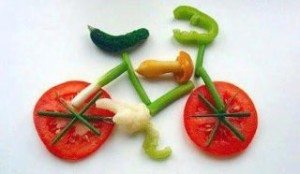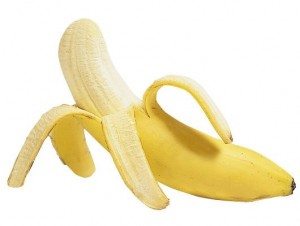Happy New DECADE!
THEME: “decadent” goals
Not only is it a new year, but a new DECADE! Where do YOU stand on resolutions?
Are you like the majority of promise-makers? Most people resolve to improve health and fitness. Well, if you’re like most Americans (88%)*, you have at least one resolution. And, if you are like the majority of these promise-makers, your resolution is probably related to health and fitness. *GNC Poll Research
 Within the wellness industry, surveys show that top resolutions include:
Within the wellness industry, surveys show that top resolutions include:
Lower my risk for the nation’s three top killers — heart disease, cancer, and stroke. How – engage in 45-60 mins of moderately-intense activity (eg., brisk walking, cycling, jogging or swimming) on most days of the week, supplemented this with a healthy diet.
Sharpen my mind and improve my mood. How – engage in 45-60 mins of moderate-intensity cardiovascular activity (eg., rollerblading, hiking, elliptical) on most days of the week supplemented this with a healthy diet.
To improve my immune function. How – engage in at least 60 mins of resistance training (e.g., weights, Pilates) 3 times a week supplemented this with a healthy diet. (see my article on Nutrition and the immune System)
While resolutions are well intentioned, unfortunately most people fail at keeping them.
What about setting one goal? Doesn’t matter what it is, just make it measurable and realistic. For example, lose six pounds in three months. Keep it simple! Set yourself up for success!
WORK OUT TIP :
If your goal is to exercise consistently, consider exercising in the morning on a daily basis. Statistics demonstrate that over 90% of people who exercise consistently are daily, morning exercisers! Even if you have to get up a little earlier, your exercise will be done and you’ll be energized for the day.
Research has shown that listening to music may distract one from their “bodily awareness.” This can infact go both ways – reduces the concept of pain, therefore give up too soon (the mind is a lot stronger than the physiology we perceive to be hurting) – therefore music can enhance a hard workout. Furthermore, its not just listening, but controlling and creating a beat to ones own workout rhythm can have a even more reduction on perceived effort during a workout.
Bottom Line: be creative – make playlists. How many got some kind of music player device as a gift recently… books on tape can kill two birds with one stone too.
NUTRITIONALLY…
Upon waking, your body has been fasting for many hours and requires nourishment.
A balanced breakfast helps maintain health. Common breakfast foods include protein, B vitamins, essential fatty acids, and complex carbs – all important to improve concentration, mood and memory.
Breakfast is also linked to reduced risk of diabetes or excess weight gain, both by kicking your metabolism into gear and decreasing the chance of you grabbing high caloric snacks.
__________________________________
Food Fun Facts
1. The oldest evidence for soup is from 6,000 B.C. and calls for hippopotamus and sparrow meat.
2. Pringles once had a lawsuit trying to prove that they weren’t really potato chips.
3. Pound cake got its name from its original recipe, which called for a pound each of butter, eggs, sugar, and flour.
_______________________________________________
SUPERFOOD SELECTION OF THE MONTH – of all things – Chocolate
You’ve probably heard about the benefits of dark chocolate, but for most people, there is a bit of confusion between CACAO vs COCOA
While cacao and cocoa start from the same place, the way they end up (and what they go through along the way) has different effects on their nutrition benefits.
The start is the Theobroma cacao tree. This tree, native to South America, produces seed pods. Harvesters crack them open and take out the seeds, which are called cacao beans. You can eat cacao beans raw. Their flavor is like a very bitter form of chocolate, and it varies depending on the growing conditions (soil, sunlight, etc.) of the cacao tree. Beans are usually fermented and dried before they’re processed any further. What happens next determines whether the beans become cacao or cocoa.
The heavier processing (heating at higher temperatures) that transforms cacao to cocoa doesn’t just affect how manufacturers label the end product. This heat actually affects the beans on a molecular level, changing their structure and degrading nutrient content. Heavy processing is what makes cacao turn to “cocoa.” Much of the nutritional content dissipates in this state. That means that cacao, which is less processed, has more powerful antioxidant effects and health benefits.
It’s not that cocoa is inherently bad for you; it’s just that cacao is more beneficial. Baking with either kind probably decreases some of the nutrients and antioxidants, but unfortunately research quantifying just how much is non-existent at this point.
Bottom line: heating cacao or cocoa probably degrades some of the nutrients and lessens potent antioxidant effects. But cacao is the ideal choice because it starts with more of them than cocoa.
___________________________
Something healthy, nutritious and incorporates the choc fix!!
try this super powered smoothie. Cacoa antioxidants help prevent cancers, blocked arteries, and even tooth decay; flax seeds provide healthy essential fats, and berries offer fiber and vitamin C, all blended together in a grab and go breakfast.
Choco-Banana treat
¼ cup water (+ more if needed) and 5 – 6 cubes ice
1/4 cup cacoa nibs
1 Tbsp milled flaxseeds
1 frozen banana
1 scoop vanilla protein powder or 1 cup vanilla Greek yogurt
Stevia to taste (optional)
BLEND THE INGREDIENTS UNTIL SMOOTH AND YUMMY
250 calories 4g fat 0g sat. fat
18g pro 28g carbs (all good)
____________________________________________________________
Wishing you a fit and Healthy YEAR and DECADE!!
Ilana














